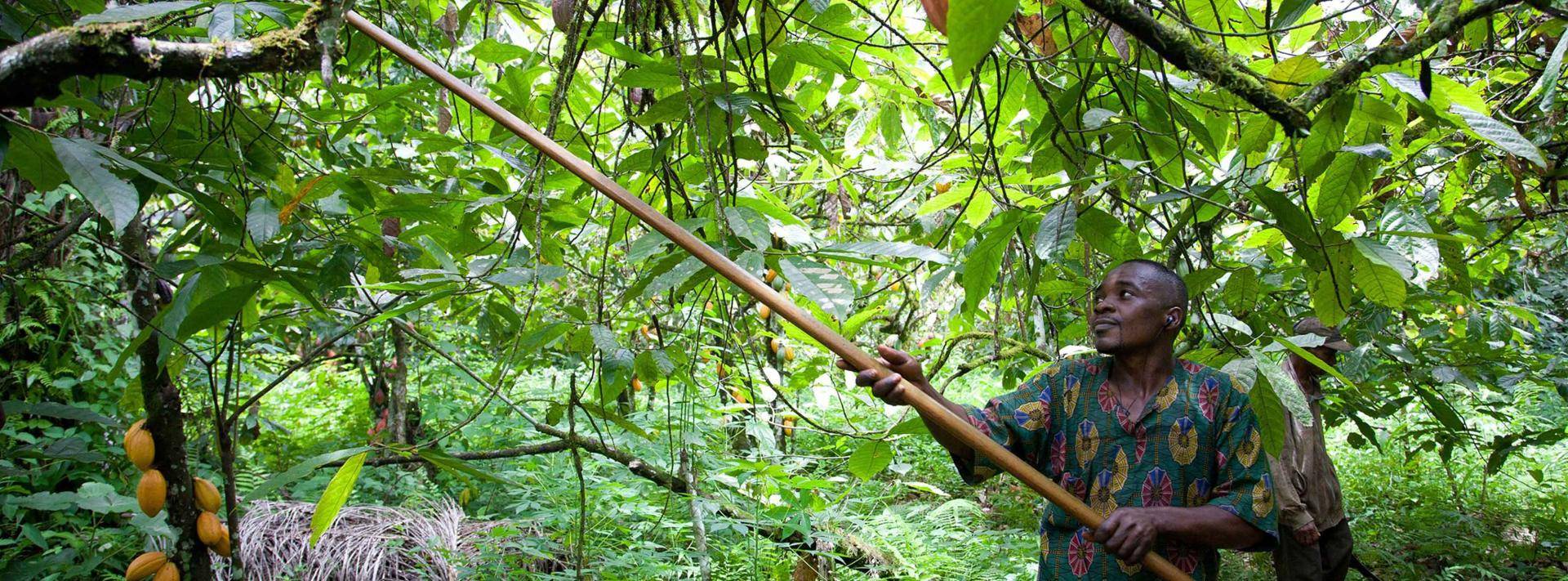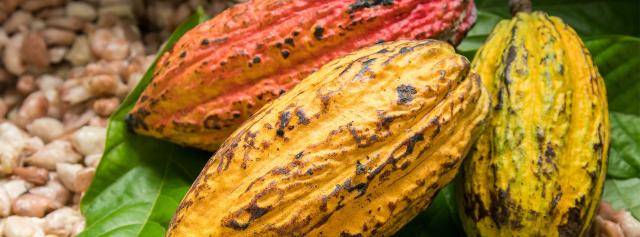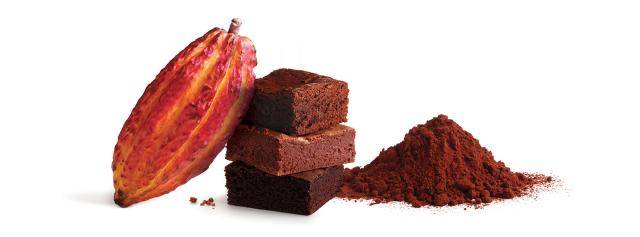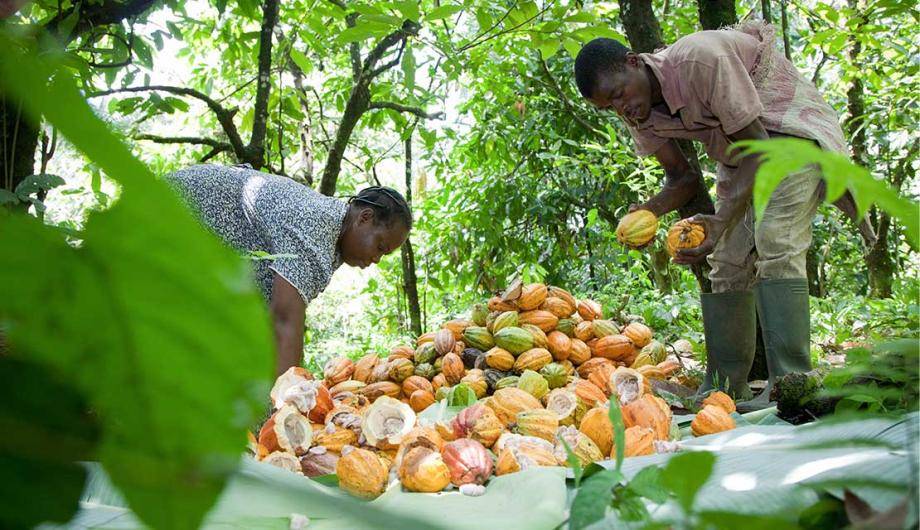
*For example, citrus trees provide a barrier to prevent insect-borne diseases transferring from other farms. If a diseased farm is infected by mealy bugs, they carry the disease in their mouth from tree to tree. However, if a mealy bug crosses a barrier of citrus, it loses the disease e.g. Cocoa Swollen Shoot virus, before moving harmlessly onto another cocoa tree.
The optimal environment for cocoa to grow
A mixed system with more shade is encouraged, because cocoa grown in full sun tends to be more susceptible to harmful insect attacks, as well as reduced moisture loss from the soil. Different tree types encourage other birds and insects to come into the environment. While biodiversity decreases the risk of diseases*. An added advantage is that the additional food crops will enrich the family’s daily diet and offer additional sources of income.
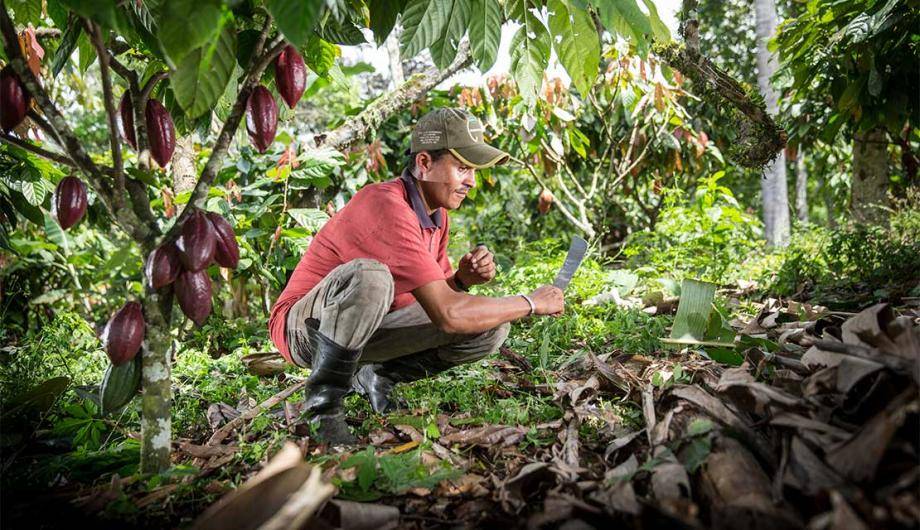
What does this mean for the cocoa farmer?
Under our Forever Chocolate strategy, we will lift more than 500,000 cocoa farmers out of poverty by 2025.
One way cocoa farmers can increase their earnings is through organic cocoa cultivation. The additional price premium paid for organic cocoa and avoiding the high costs associated with synthetic fertilizer both help increase the farmer prosperity.
